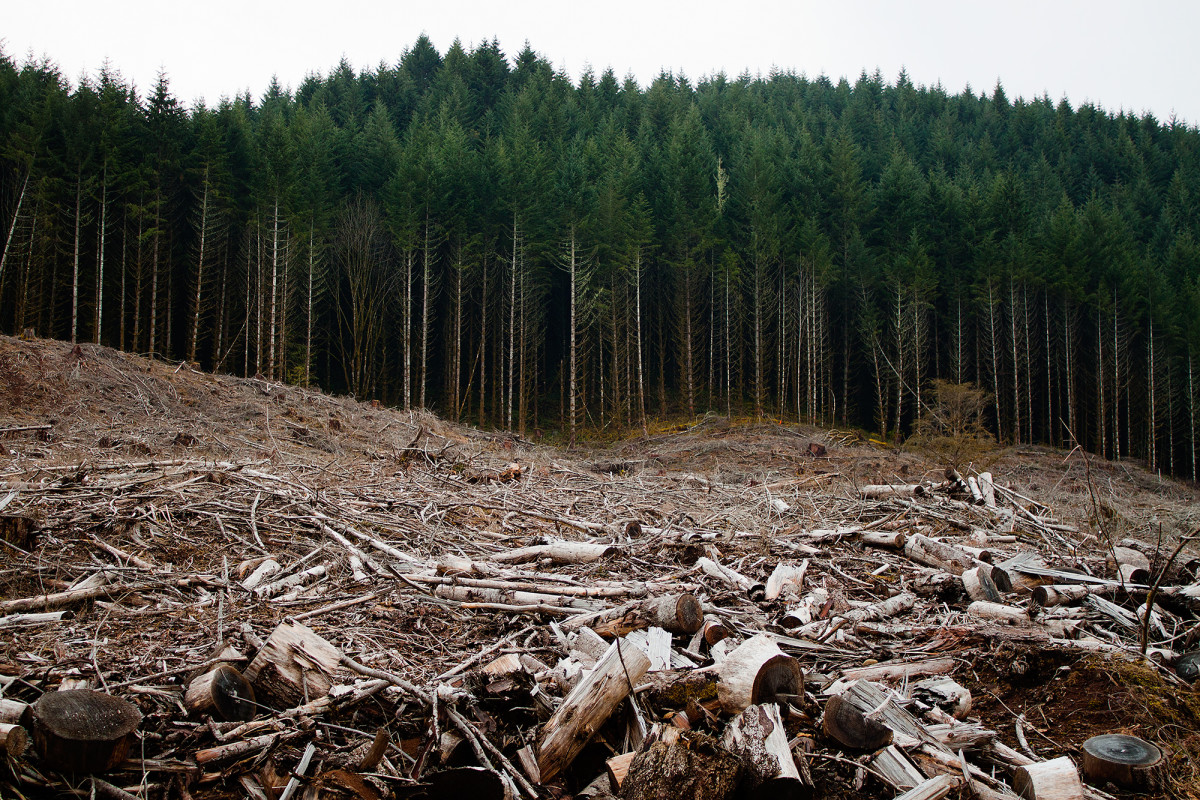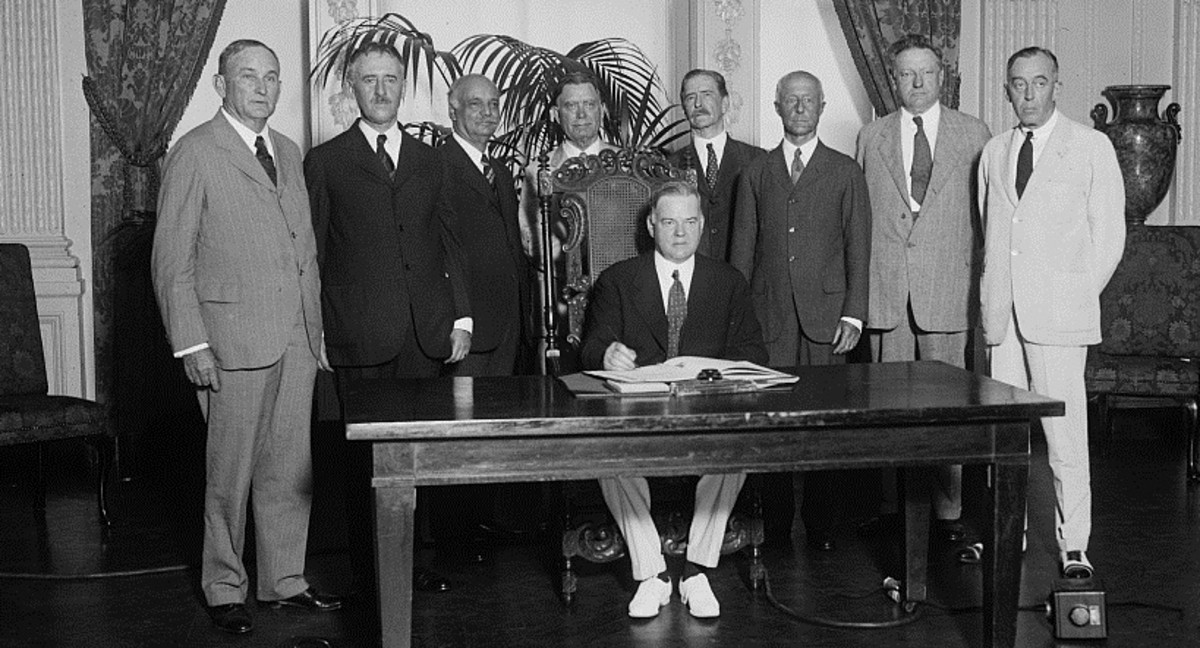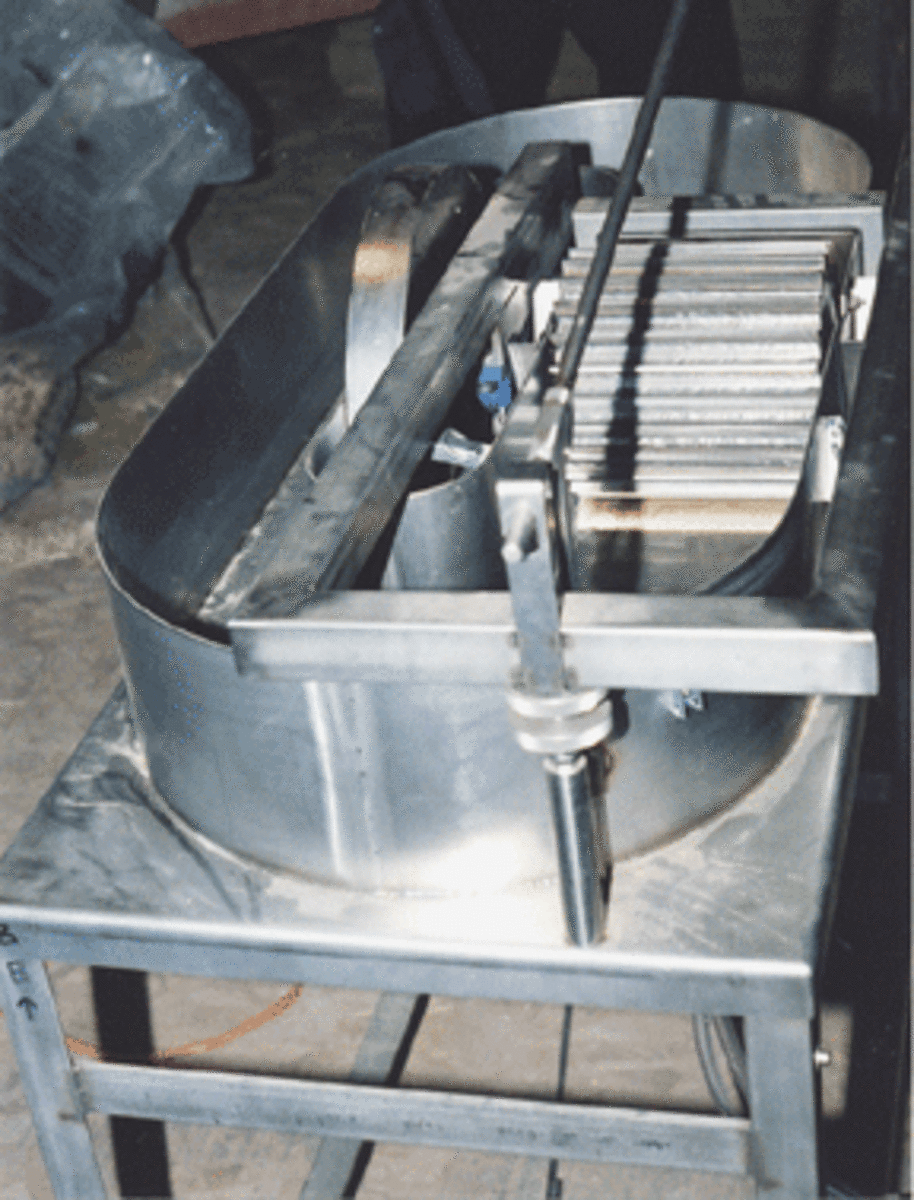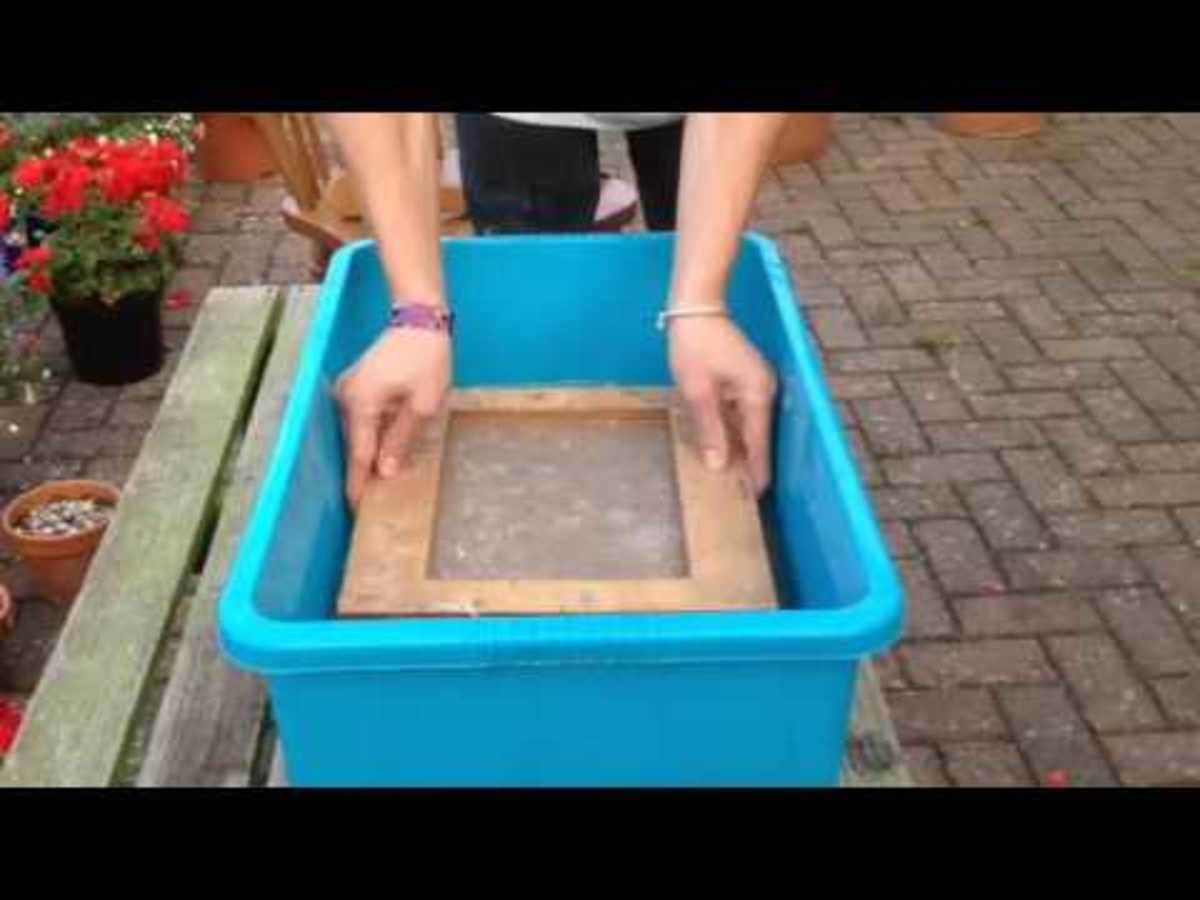Source: soapboxie.com

Clear Cutting Pulpwood--One Billion Trees a Year in United States | Source
One Billion Trees
Some hard to hear facts:
In the United States alone, paper companies consume over one billion trees each year and convert it to pulp to make paper. It takes that many trees to provide an average of 735 pounds of paper for each and every person. That number is expected to rise approximately 60% by the year 2050. The United States uses up about 32 % of the world’s paper. In the US, only about 5 % of our once vast virgin forest remain. We are using up our trees faster than we are growing new ones. At that rate, we have to import more trees from other parts of the world forest just to meet the demand.
In the United States paper mills are the third largest energy consumer and the third largest industrial polluter. We pump over 220 million pounds of toxic pollution into the world’s air and water each year.
The pulp and paper industry dumps close to 120 billion tons of CO2 and 3 million tons of chlorine into our waterways which is a major source of carcinogenic dioxins. These poisens are known to be the most toxic materials ever produced. In turn, these cause cancer, liver failure, miscarriages, birth defects and genetic damage. Every woman now has traces of these chemicals and transfer them through breast milk.
And yet, we continue in an ever increasing amount, to continue.

Herbert Hoover and Cohorts | Source
Theory of Illegal Hemp
Theory or Conspiracy, either way, growing hemp became illegal to grow in the early 1930’s. The story goes something like this:
Back in day, during the presidency of Herbert Hoover, there was also two powerful,rich, and influential men, Dupont, of the chemical industry, and Hearst, of the paper and wood industries. Dupont supplied the chemicals needed for Hearst to process his paper. And then, there was a third man, a man that Herbert Hoover created a position for, the Bureau of Narcotics, Harry Anslinger. All three played an important part of what happened next.

Pulp Making Machine | Source
Growing of hemp was already a thriving industry, supplying the byproducts of hemp to make things like rope, and clothing, and a myriad of other products. Then, like has happened so much during the industrial revolution, a new machine was invented, a machine that could process hemp and make it feasible to produce hemp pulp in an economical way and a way to produce paper efficiently without the use of major chemicals or trees.
This did not sit well with Dupont or Hearst. And so, Harry Anslinger came into the picture. His job was to eliminate the threat by creating a fear among the people about the dangers of anything hemp related. He did his job well, he created the attitude and laws that made hemp a demon from the very gates of hell. It didn’t take long to quench the possibility of a better, cheaper, paper.
Both Dupont and Hearst fared well while America who had just survived the ending of alcohol prohibition, were now faced with this new prohibition. And except for a break in it for for the use of hemp for war purposes, the war on hemp continued, even to this day.
What was taken away by generations before, is now being returned by the generation of today.
New Generations
This new generation, the millennial generation, has got the momentum to drive the legalization of hemp in all fifty states. After all, it's a just fight that will not only benefit this generation, but will provide positive results for generations far into the future. It is time for hemp prohibition to end.
And, besides that, hemp being utilized for paper is an obvious and worthwhile undertaking, it is also good to take a quick look at some of the other benefits.of legalizing the growing of this plant.
Here is a consolidated list of what else hemp can do:

Source
- Rope
- Clothing
- Food
- Textiles
- Plastics
- Insulation
- Biofuel
- Animal bedding
- Mulch
- Moisturizing Creams
- Cooking Oil
Some Other Points to Ponder about Hemp:
Hemp paper doesn’t need much in the way of chemical processing; it can be bleached and whitened with hydrogen peroxide, which doesn’t poison waterways like chloride and bleach such as used for wood pulp paper. Paper made with hemp, will last hundreds of years and will not decompose and get yellow. Regular paper is lucky if it even last fifty years. Hemp paper can be recycled eight times compared to regular paper which generally can only be recycled about three times. One acre of hemp is the same as four acres of trees.
Companies who are Leading the Way
Four of the best who are leading the way. Be sure to check out each of their websites, they each are loaded with valuable information and product selections.
- Colorado Hemp Company (.com)
- Green Field Paper Company (,asp)
- Hemphasis (.net)
- Industrial Hemp (.net)
Get Involved
Join the fight to get hemp legalized and utilized for the good of all. Here are some great starting points.
- Vote Hemp (.com)
- Freedom Activist (.net)
- Alliance of Cannabis Hemp Activists (ACHA (facebook)

Homemade deckle and deckle mold | Source
Making Your own Hemp Paper at Home
The following will give you a good idea on how to make your own hemp paper at home. It is not intended to be a hands-on instruction manual and does not take the place of training with an experienced paper maker, but is a good precursor.
Supplies & Equipment Needed
Hemp fiber pulled in slivers, Water source, Large pots, large spoon, heat source, mesh strainer, large plastic tub, heavy whisk, 5 gal bucket, small plastic containers, flat wood boards, large piece of felt, blotter paper, deckle and deckle mold, wool fabric large, cotton interface, press, sheets of flat cardboard, a bunch of bricks.
How to Make Hemp Paper
Steps Involved to Make Hemp Paper
- Fill a tub with water and place fibers in it, soak overnight
- Pour in soda ash(use instruction about amount on container)
- Cook on stove for four to five hours. Cool down
- Strain and rinse fibers
- Break the fibers into chucks
- Beat the chucks with a mixer for a couple of hours
- Place the beaten pulp into bucket
- Place pulp into large clean container
- Cover with several inches of water
- Put a flat wood board bigger than you deckle next to the the container
- Make a sheet of blotter paper to lay down on wood board
- Lay a sheet of felt on top of blotter paper
- Clamp deckle and deckle mold together with your hands
- Place deckle and mold into slurry
- Lift and let excess slurry run out of mold
- Remove and turn upside down and place on felt
- Press the bottom of mold down with all of your body weight
- Carefully remove the deckle and frame
- Place cotton interlacing on top of paper
- Repeat adding another sheet
- When finished making a stack, add a flat board to top
- Add bricks to press it until paper is dry
No comments:
Post a Comment